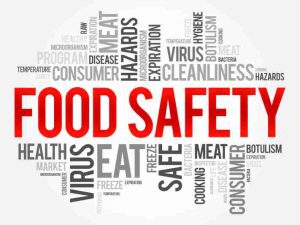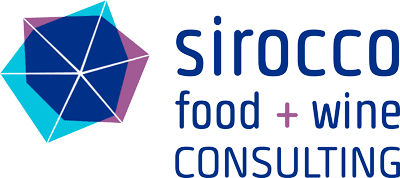In the last 15 years, food safety regulations have become stricter. As a result, food and beverage companies now invest in food safety training and HACCP/PCQI certificate courses to meet their legal responsibility. This has resulted in safer supply chains. Due to the complicated nature of food safety regulations, registering for the right food safety course or developing the correct food safety plan can be daunting. Furthermore, the number of a abbreviations used in the food industry can be confusing. In North America, we use various terms to refer to food safety plans, food safety courses and food safety certifications. People often ask, what are HACCP and PCQI? Read on to understand the difference between these 2 important concepts.
What are HACCP and PCQI?
HACCP is a food safety concept that is 50 years old and which was introduced by the Codex Alimentarius Commission. It stands for Hazard Analysis and Critical Control Points. The production of safe food relies on HACCP, a step-by-step approach that considers risks and science. This method aims to identify, evaluate, and control food safety hazards in food and beverage production. The objective of HACCP is to reliably prevent, eliminate, or reduce foreseeable risks in food. Full control of risks is how to ensure public health. Preventive Control Qualified Individual (PCQI) refers to the job description of a food safety professional trained on the US FDA’s Preventive Controls for Human Food regulations.
Let’s discuss both terms in more detail.
What is HACCP?
Writing a HACCP plan involves addressing 7 key principles in addition to implementing 5 preliminary steps. The 5 preliminary steps of HACCP are designed to create a tool for the application of key safety principles as per the Codex food safety guidelines. Be sure to review the Codex HACCP guidelines before writing your HACCP plan. The preliminary steps are:
- Assigning responsibility to a HACCP team
- Gathering product and process information (How many HACCP plans do you require?)
- Identifying target consumers, product preparation steps and other potential uses and misuses of the food by consumers
- Developing a process flow diagram (including steps for rework and storage)
- Confirming the accuracy of the flow diagram
Codex HACCP Principles
Once implemented, the HACCP team follows the 7 key principles of the HACCP guidelines which are:
-
Conducting Hazard Analysis (Principle 1):
Principle 1 identifies potential biological, chemical, radiological and physical hazards associated with each process step of a food process. Potato farms can write and maintain HACCP plans. So can post-farm processes such as bread factories and snack manufacturers. Food processes can also include food storage including mitigating risks in a cold chain process. Traditionally, HACCP targets mainly human food. Hazard Analysis and Critical Control Points now applies to other industries, the pet food and food packaging sectors.
-
Determining Critical Control Points (CCPs) (Principle 2):
Principle 2 identifies the critical points in the processes where the use of procedures prevent, eliminate, or reduce dangerous food safety hazards to safe levels.
-
Establishing Critical Limits (Principle 3):
Principle 3 sets science-based criteria to determine whether a process is safe and under control at each identified CCP. Such critical limits could include achieving a safe internal temperature of cooked fish patties or achieving pasteurization of a milk beverage. HACCP plans can control more than one CCP. Some facilities may implement controls to eliminate foreign material contamination in food or lower the risks of allergen cross contamination.
-
Monitoring CCPs (Principle 4):
Principle 4 refers to monitoring checks. These observations or measurements are conducted at CCPs to confirm that critical limits are achieved. CCP operators are trained to follow detailed monitoring procedures.
-
Implementing Corrective Actions (Principle 5):
Principle 4 ensures that corrective action procedures are in place when a CCP is not under control which could result in a serious illness if the food is consumed. Corrective actions are designed to fix the root cause of a food safety issue. In addition, HACCP does require that potentially unsafe food be quarantined, evaluated and possibly destroyed or reprocessed.
-
Verification (Principle 6):
Principle 6 guarantees the periodic reviewing and reassessing of the HACCP plan to ensure its continuing effectiveness. This includes verification and documentation of monitoring, corrective actions and scientific validation of critical limits.
-
Record-Keeping (Principle 7):
Principle 7 dictates that detailed records be maintained, including monitoring logs, product hold logs, corrective actions and plan verification reports. The record-keeping requirements also extend to training. CCP operators and HACCP plan verifiers, lead HACCP coordinators and HACCP team members must be competent. They must receive the right HACCP training based on their job description.
HACCP Certification Training
HACCP team leaders seek certification which is generally delivered over 2 days of training by authorized HACCP educators. Professional HACCP designations also serve to qualify HACCP auditors and consultants (ASQ Certified Food Safety and Quality Auditor (CFSQA), Canadian Certified HACCP Professional (CCHP)). Basic HACCP training can also be provided in-house depending on employees’ level of involvement with HACCP plan activities. While such short courses provide food safety awareness, certification courses and professional designations are designed to acquire skills to write and implement HACCP plans.

Why is HACCP so Important?
-
Ensures Food Safety:
HACCP reduces the level of foodborne hazards and illnesses in food. By identifying and controlling food safety risks at critical points in the food and beverage production process, it significantly reduces the probability of contaminated or unsafe food reaching consumers.
-
Legal Compliance:
In order to operate a food safety, a HACCP plan is required because it is an internationally recognized food safety program. Food importers must also be familiar with HACCP and perform food safety verifications of foreign HACCP plans.
-
Safeguard Brand Reputation:
Implementing HACCP demonstrates a commitment to food safety and the prevention of food fraud. This is important when trading food domestically and internationally.
-
Cost-Effective:
Due to its preventive nature, HACCP identifies potential issues early in the primary and manufacturing food process. HACCP can save companies costly recalls and lawsuits.
-
Continuous Improvement:
HACCP fosters a culture of continuous improvement. Adequate leadership, regular monitoring, prompt corrective action, verification, validation and plan reassessment help strengthen the safety of the food production process.
PCQI versus HACCP (or HARPC versus HACCP)
PCQI (Preventive Control Qualified Individual)
The Current Good Manufacturing Practice, Hazard Analysis, and Risk-Based Preventive Controls for Human Food Rule (aka PCHF rule) is one main food safety regulation in the United States. The scope of the regulations includes FDA registered facilities that manufacture/process, pack, or hold food for consumption in the U.S.
The US FDA’s definition of a PCQI is an individual who has successfully completed training in the development and application of risk-based preventive controls outlined in the Preventive Controls for Human Food Rule (PCHF Rule).
HARPC and HACCP
The US FDA introduced the PCHF rule in 2011. At that time, industry experts started using the term HARPC (Hazard Analysis and Risk-Based Preventive Controls) to differentiate it from HACCP. However, this is not a term that the US FDA uses. In addition to the PCHF rule, the Foreign Supplier Verification Program (FSVP) sets regulations for the safety of imported food. This rule requires a Qualified Individual (QI) to oversee foreign supplier verifications of food safety controls.
Differences between the PCHF rule and HACCP
Traditionally, HACCP was about the manufacturing process and did not cover the entire supply chain. in 2011, the Obama administration passed FSMA and the PCHF rule into law. These regulations focus on non- intentional food safety hazards but also target the prevention of food defense threats and food fraud.
While both sets of food safety requirements are preventive, PCQIs implement the PCHF rule and work alongside trained employees. PCQIs can be salaried or contracted by food businesses. HACCP, on the other hand, does specify training and the designation of a team.
CCPs under FSMA are process preventive controls. One responsibility of the PCQIs is to valiadte process preventive controls. The regulations also mandate other types of preventive controls. These are allergen, sanitation and supply chain controls.
Lastly, the PCHF rule sets specific frequency requirements such as weekly plan verifications by PCQIs. In addition to weekly checks, the plan must be reassessed a minimum of every 3 years.
So, what are HACCP and PCQI?
Food companies follow good safety practices and use HACCP to prevent health risks present in food. The inception of HACCP dates back to 1969. HACCP is at the core of many food safety regulations such as FSMA and the PCHF rule. Furthermore, third-party food safety certifications such as GFSI audits also require HACCP plans. On the other hand, FSMA and PCHF are American regulations that go beyond HACCP. One specific requirement is the designation of one or more PCQIs to oversee food safety plan activities.
References
Sirocco Food + Wine Consulting provides HACCP and PCQI training courses. We are also HACCP plan writers and can write your food safety plan to meet SQF, FDA FSMA or Canadian SFCR requirements. Browse our blog for information on HACCP and PCQI requirements.





